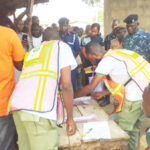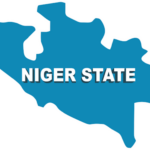Abandy Faith is an artist who specializes in painting and creating art from fabrics. Her works include Portraits of Fela Kuti, Ejima series, Agbogo series among others. Here, the graduate of University of Port Harcourt, Department of Fine Art and Design, talks about sourcing waste fabric for her work, her journey so far, and more. Excerpts:
What informed your choice of fabrics for art?
It’s my love and passion for the environment. Growing up in a rural community, we were surrounded by waste products that polluted the environment. Also, as part of my art training in the university, I learned how to use various items to create art. So, recycling waste fabric and turning it into something beautiful enough to be hung in a house is my own way of contributing positively in cleaning up the environment.
- Ifeanyinwa: A case for GBV justice
- Kankara: Military locates bandit enclave, exchange fire, says presidency
You seem to focus more on creating pictures of women. Is there a particular reason for this gender bias?
First off, I am a woman, and charity begins at home. I enjoy showcasing the beauty and strength of the African woman, like my piece, ‘The Red Basin’, which I submitted to the UNESCO Regional Art Challenge as part of their campaign to end violence against women.

What was your journey like from the very beginning? Did you always know you would become an artist?
My drawings have always been exceptional as a kid but never thought I would be doing it professionally. Growing up, my family didn’t place much value on art. It was all about science. When it was time to apply to a university, I pressurized to follow my mates and study “serious” courses. I was adamant and chose art.
How lucrative would you say it has been for you so far?
The art market in Nigeria is an emerging one, but it is improving. In other more developed regions of the world it is very lucrative.
What kind of stories would you say you aim to tell with each work you make?
The beauty in being African, the culture and the people, and the strength of the African woman.
How do you source for the fabrics you need? Is your search random?
I go to tailoring shops, marketplaces where tailors are and I also gather the tailors’ offcut or waste fabric. So, instead of throwing those away, they keep them for me. I once cut off the inner linings of my sister’s cloth because it just had the perfect colour for the eyes on one of my projects. But that’s the most mischievous length I have gone to get fabrics.

What specific challenges do you encounter in your line of work and how are you able to surmount them?
Like I said, Nigeria is still an emerging art market, so our appreciation of art is still growing. Some might just dismiss me for being an artist, but I still continue my work because criticisms abound in every line of work.
Another challenge is in sourcing waste fabric, some people are reluctant to give them to me because of superstitious beliefs. A tailor in the market once called me a ritualist for asking for her waste fabric that she was going to throw away anyway. I don’t blame them though. For some, I go prepared to show them pictures and videos of my work. That makes them a little bit more comfortable.
Where do you see yourself in the next ten years?
I see myself teaching and grooming a new generation of creatives. Also, I continually improve my work, not just for the Nigerian audience but also internationally.
What are you working on at the moment?
I am starting a new series for my solo exhibition centered on issues prevalent in Nigeria.

 Join Daily Trust WhatsApp Community For Quick Access To News and Happenings Around You.
Join Daily Trust WhatsApp Community For Quick Access To News and Happenings Around You.


